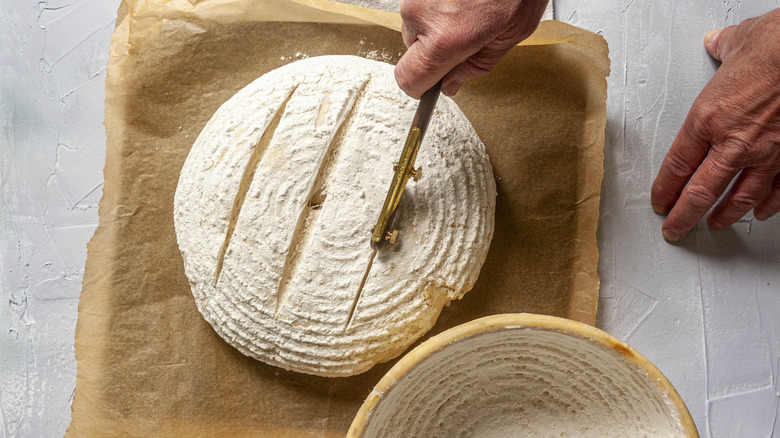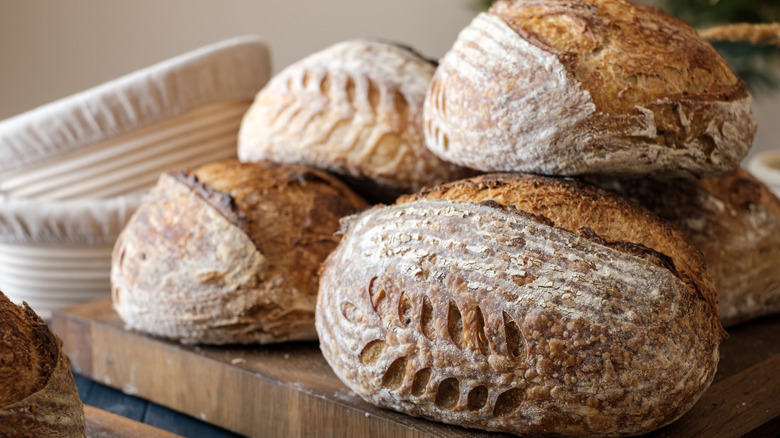Why You Should Always Score Bread Dough, And What Happens When You Don't
The score of a loaf of bread is what's responsible for its design on top, commonly diagonal slashes for long loaves like batards and a curved slash or a cross on classic boules. Bread bakers on social media get fancy these days and carve intricate designs and patterns — wheat stalks, spirals, stars — into the tops of their sourdough loaves. However, the score of a loaf is for more than just aesthetic purposes; it helps to control the release of steam during baking which could otherwise cause your loaf to crack in unexpected places and expand unevenly.
We spoke to bread expert Nathan Myhrvold, founder of Modernist Cuisine and co-author of "Modernist Bread at Home", who explained that the steam that's created during baking is a result of the water in the dough being heated. It has to escape somehow, so it will find the path of least resistance to do so in the dough's weak spots. Scoring allows you to determine that path by creating intentional weak spots. If you don't score your bread, the steam will likely escape from the seams along the side or bottom of the loaf. "This can make for unsightly rips called blowouts," Myhrvold warns. Scoring also encourages oven spring, the rapid expansion of dough within the first few minutes of baking — skipping this step can cause it to expand jaggedly rather than symmetrically.
Tips for scoring bread dough for great baked loaves
The tool is perhaps the most important consideration when it comes to scoring bread. Nathan Myhrvold stresses that it doesn't have to be fancy or cost an arm and a leg, but it should tick one box. "It just needs to be razor-sharp," he says. He offers further tool tips, saying, "Thin blades produce cleaner cuts than thick ones. Blades that can be curved will be more versatile than inflexible ones that can't easily create flaps in the dough." Myhrvold's go-to tool is a classic lame. He says, "It's simply a very sharp and thin razor blade held in place by a metal handle. Some have removable blades that can be replaced when they become dull; others are fully disposable."
Myhrvold suggests using only the tip of your blade when scoring your loaf and slicing the dough at a shallow angle. "You also want to cut quickly and assertively — do not hesitate once you've begun your score," the bread expert advises. Doing so can cause the blade to catch on the dough and cause small rips along the score. Experimenting with simple or detailed cuts is your choice and what works best for your bread. Myhrvold reassures us that getting scoring right takes practice.
He also offers care advice for your cutting tool, saying, "If you bake daily, or even frequently, change your blades every day or two. Crusty blades can be soaked in water to soften the buildup... Then wipe them carefully with a clean paper towel."

